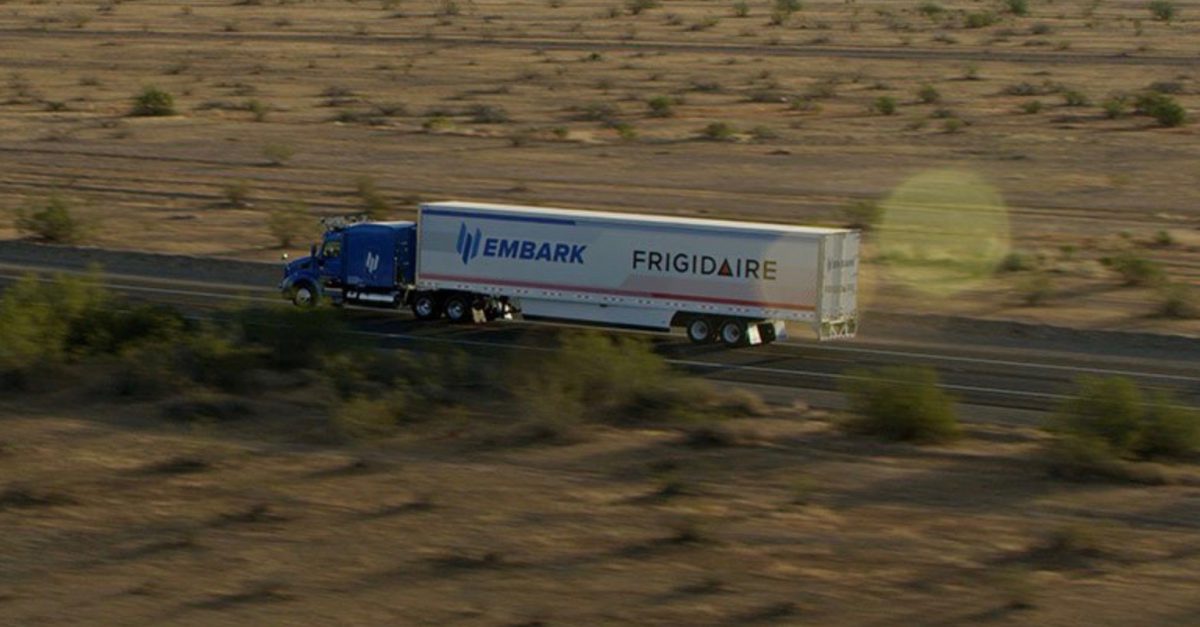Starting in October of this year, smart trucks reportedly began hauling high-tech refrigerators along and I-10 freight route running from El Paso to Palm Springs, California.
Videos by Rare
According to Wired.com, a human capable of driving does in fact sit in the cab of the trucks, but they don’t actually handle the rig.
Instead, they are along for the ride to monitor the computer guiding the truck, with an end goal in mind of making the process completely automatic.
“This is the first time someone has demonstrated this end-to-end,” Alex Rodrigues, CEO of startup company Embark, which makes the self-driving trucks, said in an interview. “It showcases the way that we see self-driving playing into the logistics industry.”
Driverless semi trucks are said to be the latest revolution in self-driving vehicles; companies, like Volvo and Elon Musk’s Tesla, are building their own long-haul trucking robots, complete with successful test runs already under their belts, as well.
At the moment, experts agree, there is movement for automated technology in the world of logistics:
Compared to surface streets in a city, self-driving vehicles can operate relatively easy on open highways, primarily working to keep their distance from the drivers around them and from veering out of the lane they’re following.
Additionally, some 70 percent of goods in the U.S. are said to be shipped via semi truck, pushing a demand for drivers.
Despite the shift in delivery specs with technology, however, according to Wired, the number of humans available to fill it is dropping; the trucking industry is reportedly down 50,000 drivers and stands to lose even more.
There are also arguments of support for self-driving trucks in how they might also be able to save lives; controlled by a computer instead of a human being that tires, accidents due to fatigue could be avoided altogether.
On the moneymaking end, driverless trucks could also make work shift limits a thing of the past, allowing goods to be moved more frequently and, therefore, potentially more quickly.
As described, the trucks begin to move once a human driver hauls the test loads to a pick up site, where they attach it to the self-driving vehicle for the main stretch of the journey.
After it reaches its destination, another human driver takes it the last leg of the way.
Reports show some testing is still needed to see if the self-driving semis can handle things, such as smooth lane changes and construction zones, as well as paperwork to be filed.
Embark Launches Autonomous Truck Tests of Frigidaire Appliance Deliveries https://t.co/rHe5Hnm6UH pic.twitter.com/9GhHczaNE8
— Mitch PP (@MPrestonPhypers) November 15, 2017
But if all goes well, the semi passing you on I-10 could eventually be a robot.
RELATED: Ford Recalls 117K Trucks, SUVs Over Breakable Seat Belts



